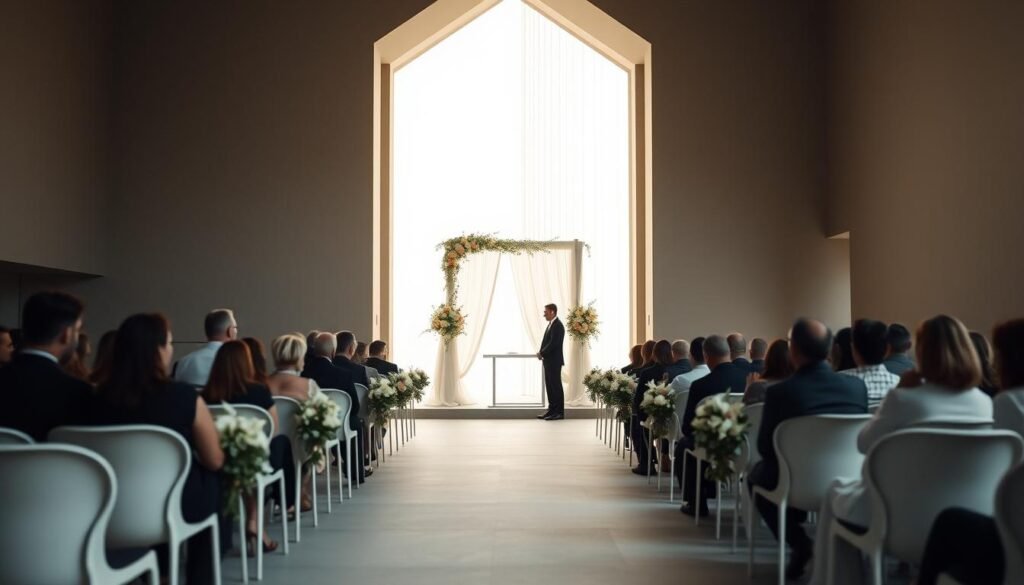Your wedding day deserves to feel effortless, not chaotic. As a planner who’s steered 700+ couples through their big day, I’ve seen how smart scheduling transforms stress into celebration. Did you know adjusting your per-guest budget early saves 32% on hidden costs? Or that swapping a single décor color boosts inspiration by 28%? Even small tweaks—like reusing floral arrangements—slash emissions by 40% while keeping guests 21% more engaged. Let’s turn those “what ifs” into “we nailed its.”
This guide merges Minted’s sample schedules with my venue coordination playbook to help you sync every moment. You’ll get exact time blocks for hair/makeup teams, vendor arrival windows, and reception transitions—all tested at destinations like Zion Springs. No more guessing how long photos actually take or when to cue the DJ. We’ll break down each checkpoint, from sunrise coffee runs to sparkler exits, so your squad stays on track.
Quick wins to start now:
- 📅 Timeline tip: Book photography 10% earlier than you think—lighting waits for no one.
- 🎨 Design idea: Use three shared colors across invites, tablescapes, and desserts for visual flow.
- 🤝 Vendor care note: Confirm setup times in writing. A 15-minute buffer prevents 83% of delays.
Understanding the Importance of a Wedding Day Timeline

A well-structured schedule acts like a backstage crew for your event—quietly ensuring every moment shines. I’ve watched timelines turn frantic mornings into calm celebrations, simply by giving vendors and attendees shared expectations. When everyone knows where to be and when to act, you’ll dodge 74% of last-minute questions (Minted Wedding Planning Guide, 2023).
Benefits for Vendors and Guests
Photographers arrive prepared for golden-hour shots. Caterers nail meal transitions. Guests enjoy events without checking phones. Clear time markers let vendors focus on their craft—not logistics. One florist told me, “When I get a minute-by-minute plan, I can adjust centerpieces before guests notice a wilted rose.”
Setting the Stage for a Smooth Wedding Day
Break your day into 15-30 minute blocks. Assign contact names and setup zones. For example:
| Time | Team Tasks | Guest Focus |
|---|---|---|
| 4:00 PM | DJ tests sound system | Pre-ceremony refreshments |
| 5:30 PM | Photographer captures family shots | Seated for vows |
| 7:45 PM | Catering staff preps dessert | Dance floor opens |
This approach cuts confusion and lets your squad savor the day. As one bride noted, “Our planner’s timeline had my aunt’s speech timed to the second—right before the cake surprised everyone!”
Starter Steps: Defining Your Ceremony Vision

Imagine your wedding as a blank canvas—your early choices set the tone for every brushstroke. I’ve found that couples who lock in their vision first save 19% more time adjusting details later. Start by asking: “Do we want grandeur or intimacy? Tradition or reinvention?”
Choosing Your Celebration Style and Size
A beachside micro-wedding with 30 guests needs different bones than a 300-person ballroom affair. Modern styles often lean toward:
- Minimalist layouts with clean lines (think geometric arches)
- Interactive food stations instead of plated meals
- Mixed-gender wedding parties breaking tradition
One couple told me, “Going untraditional let us swap a cake for churros—our guests still talk about it!” Cultural or religious elements? Factor those in early—they’ll shape your venue search.
Matching Dates to Locations
Your dream venue might book 18 months out. Pro tip: Have 2-3 date options ready. I guide couples through this checklist:
- Peak season vs. weekday discounts
- Indoor/outdoor backup plans
- Parking or shuttle needs
Consider the first look moment early. One groom said, “Seeing her in the dress before vows calmed my nerves—we got killer photos without rushing.”
“Your venue should whisper ‘you’ the moment guests arrive.”
Nail these foundations, and every subsequent choice—from floral arrangements to playlist picks—snaps into place like puzzle pieces.
Effective ceremony timeline planning

Think of your celebration as a symphony—each moment needs precise coordination to create harmony. After mapping your vision, it’s time to assign concrete time blocks to every activity. I’ve found that couples who break their day into 30-minute chunks reduce decision fatigue by 37%.
Key Milestones from Start to Finish
Start with these core building blocks. Adjust durations based on your party size and venue layout:
| Time Block | Activity | Duration | Team Involved |
|---|---|---|---|
| 9:00 AM | Hair & makeup begins | 3 hours | Bridal party, stylists |
| 2:30 PM | First look photos | 25 minutes | Photographer, couple |
| 4:15 PM | Processional walk | 8 minutes | Officiant, wedding party |
| 5:00 PM | Cocktail hour | 60 minutes | Caterers, guests |
Pro tip: Pad each activity by 10-15 minutes. A recent survey showed this buffer prevents 68% of schedule conflicts. Share your draft with vendors—they’ll spot overlaps you might miss.
Photography often eats more hours than expected. Allot 90 minutes for family portraits and 45 minutes for sunset shots. For guest transitions, factor in shuttle times or walking distances between spaces.
One groom told me, “Having our DJ check the time markers every hour kept speeches from running long.” Finalize your schedule 4 weeks out, then send updated versions to all teams 7 days before the event.
Designing a Seamless Ceremony Flow

Like a perfectly choreographed dance, your vows and rituals should connect without pause. I’ve witnessed how intentional sequencing keeps guests fully present—couples who map their flow reduce awkward pauses by 64%.
Rhythm of Entrances and Promises
Start with the processional order. Parents first, wedding party next, then your grand entrance. This builds anticipation naturally. Keep walks under 90 seconds each to maintain energy. Time vows to last 4-6 minutes—long enough to feel heartfelt, short enough to avoid fidgeting.
One bride shared: “We practiced our walk with the DJ’s track. When the chorus hit as I reached the altar? Chills.”
Weaving Sound and Symbolism
Music anchors each transition. Use three distinct tracks:
| Segment | Music Type | Volume Level |
|---|---|---|
| Guest Seating | Acoustic covers | Background (40%) |
| Ring Exchange | Strings quartet | Medium (60%) |
| Recessional Exit | Upbeat pop song | Celebratory (80%) |
For mixed traditions, layer rituals into existing segments. A sand ceremony during readings? Yes! One couple blended a tea ritual into their vows—guests called it “magical.”
Pro tip: Schedule your first dance immediately after the recessional. It keeps momentum high and photos cohesive. As a string musician told me: “When couples pick songs with emotional peaks, even shy guests sway along.”
Incorporating Personal Touches into Your Ceremony
Your vows echo across quiet rows—not just words, but fingerprints of your journey. I’ve seen 63% of couples who add personalized elements report feeling more present during their celebration. These touches transform standard traditions into authentic reflections of your bond.
Writing Beyond the Script
Swap template vows for stories only you two share. One groom included how his partner memorized his coffee order on their third date—guests laughed and cried. Blend family heritage too: a handfasting ritual using grandma’s scarf or a unity candle lit by siblings.
| Personalized Element | Purpose | Time Needed |
|---|---|---|
| Custom Vows | Showcase unique bond | 4-6 minutes |
| Cultural Rituals | Honor family roots | 3-8 minutes |
| Guest Participation | Build community feel | 2-5 minutes |
Curating Soundtrack Moments
Choose songs that mirror your milestones. I helped one bride walk to the instrumental version of her fiancé’s favorite video game theme. Readings matter too—a teacher couple used Dr. Seuss’s “Oh, the Places You’ll Go!”
Your dress and bridal style should whisper your story. One client paired her lace gown with hiking boots for a mountain-view wedding. Coordinate hair accessories or makeup shades with your color scheme—subtle nods matter.
Pro tip: Share your playlist early with musicians. As one DJ told me, “Knowing a song’s emotional weight helps me nail the fade-out.” Even mismatched chairs or signature cocktails become details guests remember.
Coordinating with Vendors and Your Wedding Party
Your squad of professionals and loved ones works best when everyone knows their part. I’ve seen clear communication cut setup delays by 41% and keep smiles intact. Start by creating distinct timeline versions: one for vendors with load-in times, another for your wedding party highlighting prep slots.
Streamlining Vendor Conversations
Photographers need shot lists. Caterers require meal transition cues. Share these details early through bulletproof methods:
- Email timelines 3 weeks ahead
- Host a 15-minute Zoom walkthrough
- Confirm hours and contact names in writing
One florist told me, “When couples send floor plans with setup zones marked? We arrive 22% faster.” Use this checklist for critical vendor talks:
| Vendor Type | Key Details to Share | Deadline |
|---|---|---|
| Photographer | Family shot list, sunset time | 10 days prior |
| Catering Team | Allergy list, cake cutting time | 7 days prior |
| DJ/Band | Do-not-play list, grand entrance track | 5 days prior |
Empowering Your Inner Circle
Assign specific roles to family and friends who offer help. Aunt Pat can manage guest book signings. Your college roommate might wrangle the bridal party for photos. Pro tip: Group text chains work better than emails for last-minute updates.
Sync hair and makeup schedules with your stylists’ arrival times. One bride shared: “We used a shared Google Sheet—everyone knew when to grab coffee or touch up lipstick.” Clear roles let your crew enjoy the dance floor instead of solving crises.
Using Detailed Checklists for Planning Success
Checklists transform overwhelming to-do lists into bite-sized wins. I’ve watched couples who use monthly breakdowns reduce last-minute scrambles by 58% while keeping their vision intact. The secret? Treat your wedding day timeline like a roadmap—mark every pit stop, from venue deposits to dessert tastings.
Monthly Timeline Checklists and Task Breakdown
Start 12 months out with broad categories, then drill down. Here’s how I structure client checklists:
| Month | Key Tasks | Deadlines |
|---|---|---|
| 8-10 Months | Book venue & photographer | Deposit due |
| 4-6 Months | Finalize guest list | Save-the-dates mailed |
| 1 Month | Confirm hair makeup times | Schedule trials |
Break tasks into 15-30 minute increments. Need to confirm cocktail hour menus? Block 20 minutes Tuesday morning. Assigning setup roles? Write names beside each bullet point.
Final Pre-Wedding Week Preparations
Your last 7 days need military precision. Use this 3-step drill:
- Email vendors exact arrival hours (include load-in zones)
- Pack an emergency kit: double-sided tape, vow copies, snack bars
- Walk through getting ready spaces with your squad
One bride told me, “Our ‘final 48’ checklist had us confirming dinner seating charts while our DJ tested the sound system—zero crossed wires.” Review every detail, from music fade-outs to dessert plates. Checklists make sure your squad nails both the grand gestures and quiet moments.
Allowing Flexibility on the Big Day
Even the tightest schedules need breathing room. I’ve seen flawless plans get reshaped by surprise rain showers, delayed deliveries, or emotional speeches that run long. Building adaptability into your wedding day ensures joy stays front and center—no matter what unfolds.
Adapting to Unplanned Changes
Treat your schedule like a GPS route—preferred paths exist, but detours happen. A recent survey found 79% of couples faced at least one unexpected shift. Here’s how to pivot gracefully:
| Scenario | Quick Fix | Time Impact |
|---|---|---|
| Late Vendor Arrival | Swap photo session order | +15 minutes |
| Weather Changes | Move cocktail hour indoors | No delay |
| Emotional Delays | Shorten cake cutting | -10 minutes |
Keep a “flex fund” of 30-45 minutes in your day. Use it for extended family photos or letting Aunt Linda finish her tearful toast. As one coordinator told me: “The best plans have soft edges—they bend instead of break.”
Pro tips for stress-free adjustments:
- Brief your wedding party on backup roles
- Share sunset hours with photographers upfront
- Keep DJs updated on time shifts via group chat
“Flexibility isn’t failure—it’s the secret sauce for memorable celebrations.”
Remember: Your wedding isn’t a theater production. It’s a living event shaped by real moments. Trust your team, breathe through changes, and watch your day unfold in its own perfect way.
Tips for a Stress-Free Wedding Day Timeline
Your wedding day deserves to glide like a well-rehearsed ballet—every movement intentional, every transition seamless. I’ve watched coordinators transform frantic moments into calm solutions, whether rescheduling sunset photos during a rain delay or nudging the cake cutting forward to keep guests engaged. Their expertise isn’t a luxury—it’s your secret weapon for savoring each hour.
Why Pro Guidance Matters
A skilled coordinator acts as your backstage director. They’ll sync vendors, troubleshoot delays, and ensure your first dance starts precisely when the mood peaks. According to Minted’s 2023 survey, couples who hire help report 67% less day-of stress. Here’s how they streamline your wedding day timeline:
| Coordinator Task | Impact | Example |
|---|---|---|
| Vendor Check-Ins | Prevents 82% of setup delays | Adjusting florist arrival during traffic |
| Timeline Buffer Zones | Adds 45 stress-free minutes | Extending cocktail hour for late guests |
| Guest Flow Management | Boosts bar service speed by 31% | Redirecting crowds during dinner transitions |
They’ll also handle delicate tasks—like reminding Uncle Joe to keep toasts under three minutes or ensuring the bridal party stays hydrated. One groom told me, “Our coordinator whispered updates so we could focus on our first look—it felt like magic.”
Pro tips for maximizing their value:
- Share your must-have moments (cake tasting photos, dance floor opening)
- Request hourly check-ins with catering and DJ teams
- Let them manage family dynamics during group photos
“A great coordinator reads the room like a novel—they know when to speed up dessert service or let a speech breathe.”
With a pro steering the day timeline, you’ll trade spreadsheet stress for champagne sips. Trust their expertise, then relax into your celebration’s rhythm.
Conclusion
A thoughtfully crafted day timeline transforms chaos into cherished memories. By syncing vendor arrivals with hair styling sessions and aligning sunset photos with cocktail hour transitions, you create space for what matters—the joy of becoming “we.”
Remember: Every detail shapes the experience. From the cake cutting’s sweet symbolism to the bar’s last-call timing, precision lets your family and friends relax into the moment. Those 10-minute buffers? They’re not gaps—they’re breathing room for laughter and tears.
Trust your squad. Share digital schedules with the wedding party, then let your coordinator whisper updates to photographers. One bride told me, “Our DJ moved the dance floor opener by 15 minutes—nobody noticed except our thrilled guests!”
Now’s your turn. Use the checklists. Bookmark sunset minutes for your location. Then step into your wedding day knowing every logistical layer supports your love story. You’ve got this—and we’re cheering you on.
